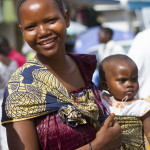Sometimes I still have the nightmare: I’m critically ill in the hospital, my meds no longer working, my body failing, my death imminent. I panic, wondering how things got so bad so quickly. My heart pounds at the knowledge that I am about to suffer a slew of opportunistic infections I cannot avoid. This is not mere paranoia: After all, HIV has been the central struggle of my adult life.
I awake and in several moments ascertain that I’m just fine: healthy and at home in my bed. It takes a few more moments for me to remember the whole truth: I am HIV negative.
“You’re lucky,” many people tell me when I disclose that 13 years ago I lost my partner, Steven, to AIDS. The good fortune, as they see it, is that Steven did not infect me. “It wasn’t luck,” I often reply: “Steven and I knew what we were doing.”
In October 1988, Steven and I had been dating for three months; I was 23 and he was 32. I convinced him that knowing our statuses would be advantageous. I’d learned there were things one could do to stave off disease progression: reduce stress, improve diet, take herbal supplements and, back then, AZT. I’d tested negative in college a year earlier. Steven’s first lover (we didn’t use the term partner back then) had died of AIDS around the same time; Steven had never been tested. Days after our visit to his doctor’s office, Steven called me. “You’re negative, I’m positive,” he said flatly into the phone.
I loved him and couldn’t imagine my life without him, despite my fear of his test results. My friends and family were horrified and suspected I had lost my mind. How could a young, promising artist like me throw his life away on an older, positive man? Choosing Steven, one family member explained to me, was the same as choosing death. Steven’s infecting me seemed an inescapable destiny. The news reports, the safer-sex ads, the health officials, everyone I knew said so: One day I would eventually, unavoidably test positive.
Only one therapist explained to me that staying negative was completely within my and Steven’s control. She was right. Steven and I never took any risks. He loved me too much to put me in danger, and I valued my health too much. “I know how to be careful during sex,” I reassured my mother. To which she replied warily: “It was that attitude that got me three children.” Seven years later, she would help me care for him as he was dying—two months before protease inhibitors would become available—of multiple infections that flourished faster than his doctor and I could treat. I escaped the last year of his life barely alive myself, exhausted and emaciated from managing his physical and mental illnesses. But I was still HIV negative.
A year later I met Jim, who was terribly muscular and sexy. “I’m on disability,” he said on our first date. In other words, he was positive. I didn’t worry about becoming infected. Making love safely to an HIV-positive man topped the short list of things I was good at, I told him. Jim and I discovered after seven years that we worked better as best friends than we did lovers. Today he is an associate at a prestigious architecture firm; thanks to daily Fuzeon injections, he remains in good health.
Living in serodiscord may seem like a precarious situation for a couple. Why would an HIV-negative person choose to complicate his life by coupling with a positive person, I was asked more than once. Many of us HIV-negative people choose to partner with positive people for a rather simple reason. We love them.
Advertisement
Advertisement
Advertisement






Comments
Comments